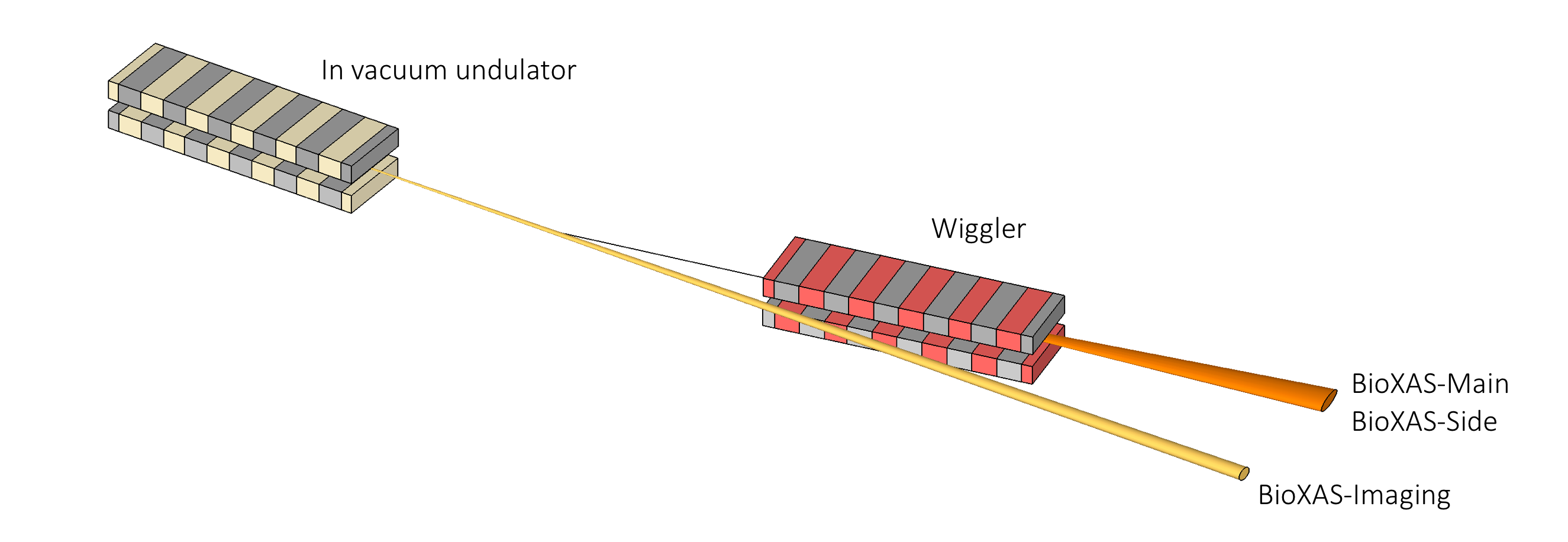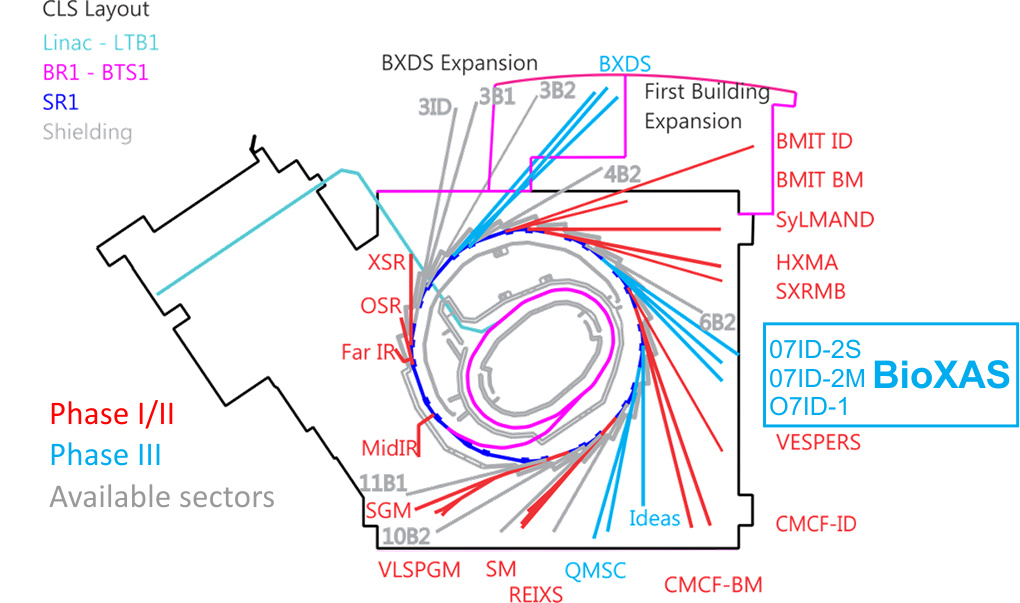
BioXAS Sector
BioXAS is a newly commissioned facility at the Canadian Light Source comprising of three beamlines. Two beamlines forming BioXAS-Spectroscopy sector (BioXAS-Main and BioXAS-Side) are dedicated to X-ray Absorption Spectroscopy (XAS) and are now open to general users. The synchrotron light for the XAS beamlines is provided by a wiggler. The third, undulator beamline -BioXAS-Imaging, is a multi resolution X-ray Fluorescence Imaging beamline, which is partially open for Scientific Access Commissioning. The BioXAS insertion devices occupy the same straight section of the storage ring but in a so-called chicaned configuration to allow the beamlines to be operated independantly of each other.

Two insertion devices, undulator and wiggler, in the BioXAS straight.

BioXAS Primary Optics Enclosure (POE).
Although the BioXAS beamlines are specifically tailored for biological and health-related studies of metals in living systems, we do encourage and accept proposals from all disciplines including environmental and materials science. Please use tabs in the main menu to find out more about the BioXAS beamlines and the synchrotron techniques they provide.
Location at the Canadian Light Source
This floor plan shows the location of the BioXAS sector 07ID in relation to the CLS beamline hall.

How the BioXAS sector came to LIGHT?
The concept for the BioXAS project has evolved largely from the scientific research programs of two Canada Research Chairs: Drs. Graham George and Ingrid Pickering. Their work focuses on the usage of X-ray absorption spectroscopy (XAS) and X-ray fluorescence imaging (XFI) techniques to further the study of the roles of metals in biological processes and in the environment. In particular, George and Pickering have excelled at improving the sensitivity of these types of experiments to dilute concentrations of metals such that the experiments can be performed at biologically and physiologically relevant concentrations of the metals.
Having agreed to move to the University of Saskatchewan, home of the Canadian Light Source, George and Pickering set out to prepare a proposal for a multi-beamline project, to be built at the CLS, with the intention that the beamlines would be optimized to produce performance characteristics ideal for the study of metals in biological samples and systems. After submitting a project proposal to the Science Advisory Committee of the CLS, George and Pickering in conjunction with the U of S, submitted a funding application to the Canadian Foundation for Innovation (CFI). The support of the U of S and the province of Saskatchewan meant that funding awarded by CFI would be matched by the province of Saskatchewan. A favorable decision for award of CFI monies was received, and the project went ahead.